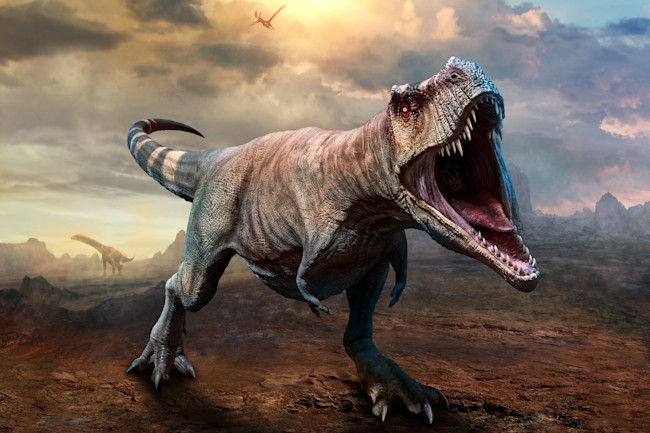
It's regular information that dinosaurs were huge, some of them had plumes, and they all went wiped out 65 million years prior after a goliath meteor hit the Earth. In any case, what don't you know? Here is a speedy and simple outline of the most significant features of what was occurring in the Mesozoic Era.
The Vast Majority of Dinosaurs Were Plant Eaters
Furious carnivores like Tyrannosaurus rex and Giganotosaurus get all the press, however it's a reality of nature that the meat-eating "peak predators" of some random biological system are minuscule in number contrasted with the plant-eating creatures on which they feed (and which themselves stay alive on the tremendous measures of vegetation expected to support such enormous populaces). By relationship with present day biological systems in Africa and Asia, herbivorous hadrosaurs, ornithopods, and to a lesser degree sauropods, likely meandered the world's mainlands in tremendous groups, chased by sparser packs of enormous , little , and medium-sized theropods.
Dinosaurs Prospered for Over 150 Million Years
With our 100-year-max life ranges, people aren't very much adjusted to seeing "profound time," as geologists call it. To place things in context: Modern people have just existed for two or three hundred thousand years, and human progress just began around 10,000 years back, unimportant squints of the eye by Jurassic time scales. Everybody discusses how drastically (and irreversibly) the dinosaurs went terminated, however deciding by the incredible 165 million years they figured out how to endure, they may have been the best vertebrate creatures ever to colonize Earth.
The Dinosaur Kingdom Comprised Two Main Branches
You'd figure it would be generally legitimate to partition dinosaurs into herbivores (plant-eaters) and carnivores (meat-eaters), however scientistss see things in an unexpected way, recognizing saurischian ("reptile hipped") and ornithischian ("feathered creature hipped") dinosaurs. Saurischian dinosaurs incorporate both savage theropods and herbivorous sauropods and prosauropods, while ornithischians represent the rest of plant-eating dinosaurs, including hadrosaurs, ornithopods, and ceratopsians, among other dinosaur types. Strangely, feathered creatures developed from "reptile hipped," as opposed to "winged animal hipped," dinosaurs.
Dinosaurs Weren't the First Reptiles to Rule the Earth
The main dinosaurs advanced during the center to late Triassic period—around 230 million years back—in the piece of the supercontinent of Pangea that currently relates with South America. Prior to at that point, the predominant land reptiles were archosaurs (administering reptiles), therapsids (warm blooded creature like reptiles), and pelycosaurs (encapsulated by Dimetrodon). For 20 million or so years after dinosaurs developed, the most fearsome reptiles on Earth were ancient crocodiles. It was uniquely toward the start of the Jurassic time frame, 200 million years prior, that dinosaurs really started their ascent to predominance.
Some Dinosaurs Were Warm-Blooded
Current reptiles like turtles and crocodiles are cutthroat, or "ectothermic," which means they have to depend on the outer condition to keep up their inward internal heat levels. Present day well evolved creatures and flying creatures are warm-blooded, or "endothermic," having dynamic, heat-delivering digestion systems that keep up steady inward internal heat level, regardless of the outside conditions. There's a strong case to be made that probably some meat-eating dinosaurs—and even a couple of ornithopods—more likely than not been endothermic since it's difficult to envision such a functioning way of life being filled by an inhumane digestion. Then again, it's improbable that goliath dinosaurs like Argentinosaurus were warm-blooded since they would have cooked themselves from the back to front very quickly.



:max_bytes(150000):strip_icc()/turfanosuchusNT-58b5bbb55f9b586046c558c0.jpg)
Comments
Post a Comment